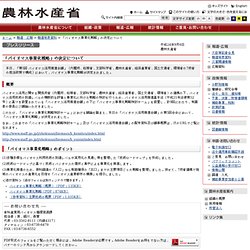

Ethanol Blend Wall Fast Approaching. The Energy Information Administration (EIA), in its July 8 weekly petroleum report, predicts that the ethanol market will reach the so-called “blend wall” by early 2011.

This is the point at which the U.S. ethanol market will be fully saturated. The Environmental Protection Agency (EPA) regulates the maximum amount of ethanol that may be blended into gasoline for use in conventional engines under the Clean Air Act. Currently, the maximum blend rate is set at ten percent (E-10) for vehicles with conventional engines. Flex fuel vehicles can use either gasoline or much higher ethanol blends – up to 85 percent (E-85). More than seven million flex fuel vehicles are on the road today. The blend wall presents a significant problem for many second generation biofuels producers who are now seeking financing to build advanced cellulosic ethanol biorefineries. Companies such as Gevo, Butamax, and Cobalt Technologies are pursuing biobutanol production technologies. Ethanol Producer Magazine. The renewable fuel standard (RFS) has been our nation’s only successful energy policy enacted in the past 40 years.

Under the RFS, biofuels now account for 10 percent of our gasoline supply. We are poised to do much, much more, reaching the goal of 36 billion gallons of renewable fuel by 2022. The RFS has answered the challenge of reducing our dependence on foreign oil and will continue to serve as a steppingstone to foster investment and innovation in both our grain-based fuels and next-generation biofuels. Yet, the all-out attack on renewables continues. Whether its grain-based ethanol, cellulosic ethanol or advanced, drop-in biofuels, critics continue to smear biofuels and use misinformation to distort the truth. The RFS continues to drive innovation. Next-generation biofuels hold tremendous promise for our future energy needs.
Constant attacks have been lobbed at the lack of availability of next-generation fuels and their progress has been slower than anticipated. Ethanol Producer Magazine. 「バイオマス事業化戦略」の決定について. 概要 バイオマス活用に関する関係府省(内閣府、総務省、文部科学省、農林水産省、経済産業省、国土交通省、環境省)の連携の下、バイオマス活用技術の到達レベルの横断的な評価と事業化に向けた戦略の検討を行うため、バイオマス活用推進基本法(平成21年法律第52号)に基づき設置されている「バイオマス活用推進会議」の下に「バイオマス事業化戦略検討チーム」を設置し、計9回にわたり、有識者の委員にご議論いただきました。

このたび、「バイオマス事業化戦略検討チーム」における議論を踏まえ、本日の「バイオマス活用推進会議」の第5回会合において、「バイオマス事業化戦略」が決定されました。 なお、これまでの「バイオマス事業化戦略検討チーム」及び「バイオマス活用推進会議」の配布資料及び議事概要は、次のURLでご覧になれます。 「バイオマス事業化戦略」のポイント (1)多種多様なバイオマス利用技術の到達レベルや実用化の見通し等を整理した「技術ロードマップ」を作成しました。 (2)技術ロードマップに基づく技術とバイオマスの選択と集中による事業化を推進します。 (3)事業化推進のため、原料調達の「入口」から販路確保の「出口」までの主要項目ごとの戦略を整理しました。 PDF形式のファイルをご覧いただく場合には、Adobe Readerが必要です。 Monthly Energy Review. Biodieselmagazine.com. Several major biofuel tax incentives are set to expire at the end of this year, including the $1 per gallon biodiesel blender credit.

Petroleum has enjoyed tax breaks for years, even though the 100-plus year old oil and gas industry reaps record profits quarterly. The Center for American Progress recently stated that the top five oil companies—BP, Chevron, ConocoPhilips, ExxonMobil, and Shell—have combined on-hand cash resources totaling $59 billion. Between that and nearly $1 trillion (that's a one with 12 zeroes) in combined profits over the past decade, why they need tax breaks at all, especially $41 billion over the next 10 years as President Obama said he will strive to eliminate, is a mystery to everyone. Obama wanting to eliminate oil and gas tax loopholes and Congress actually doing it, however, are two different things.
Anne Steckel, the National Biodiesel Board’s new vice president of federal affairs, says oil and gas subsidies add up to more than $4 billion a year.